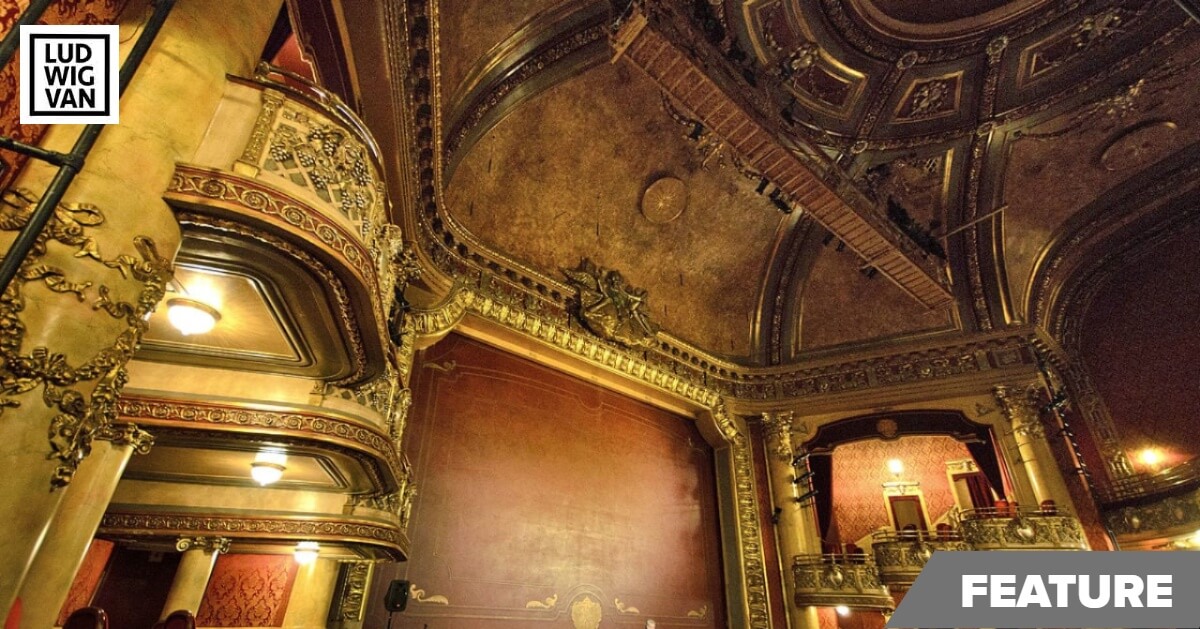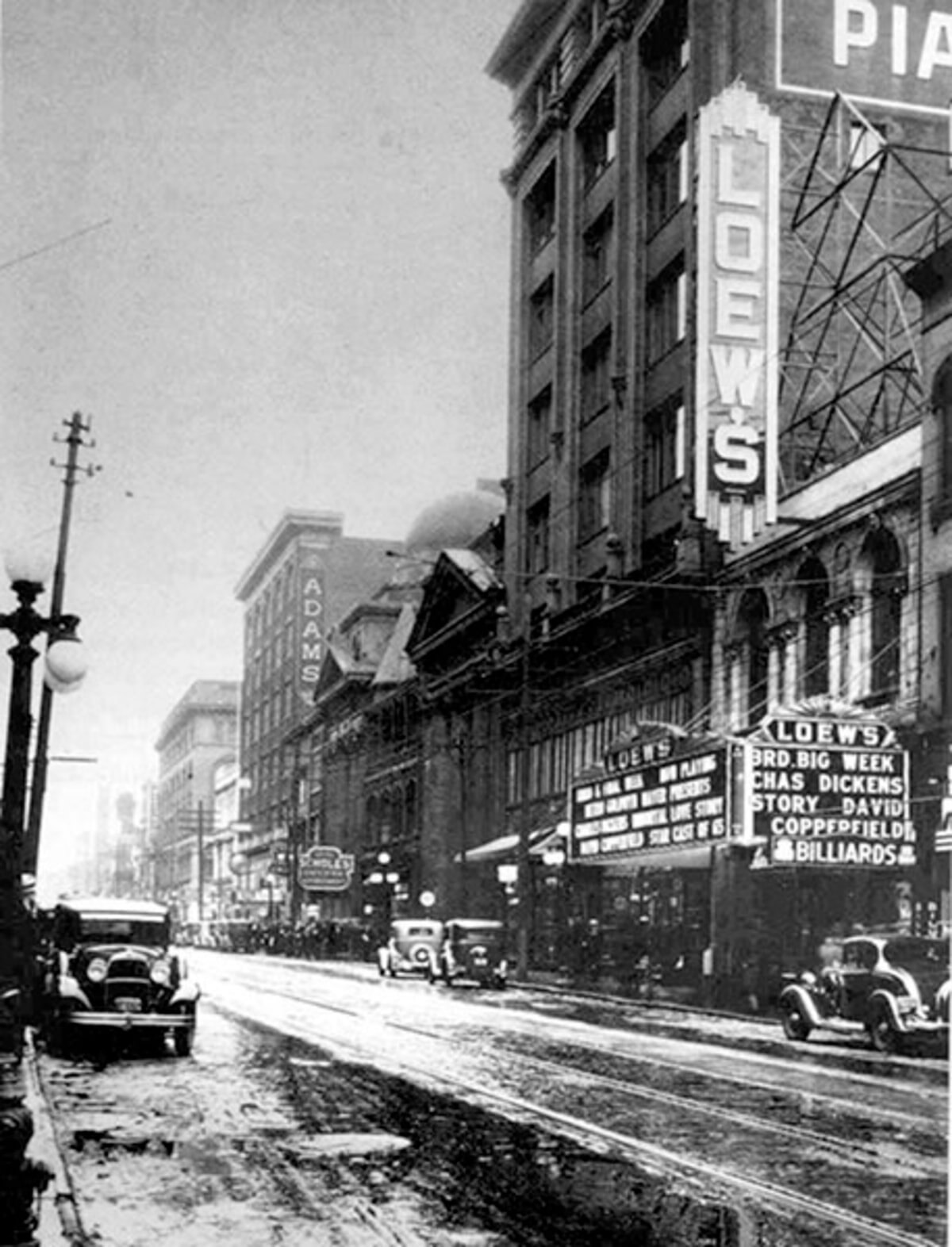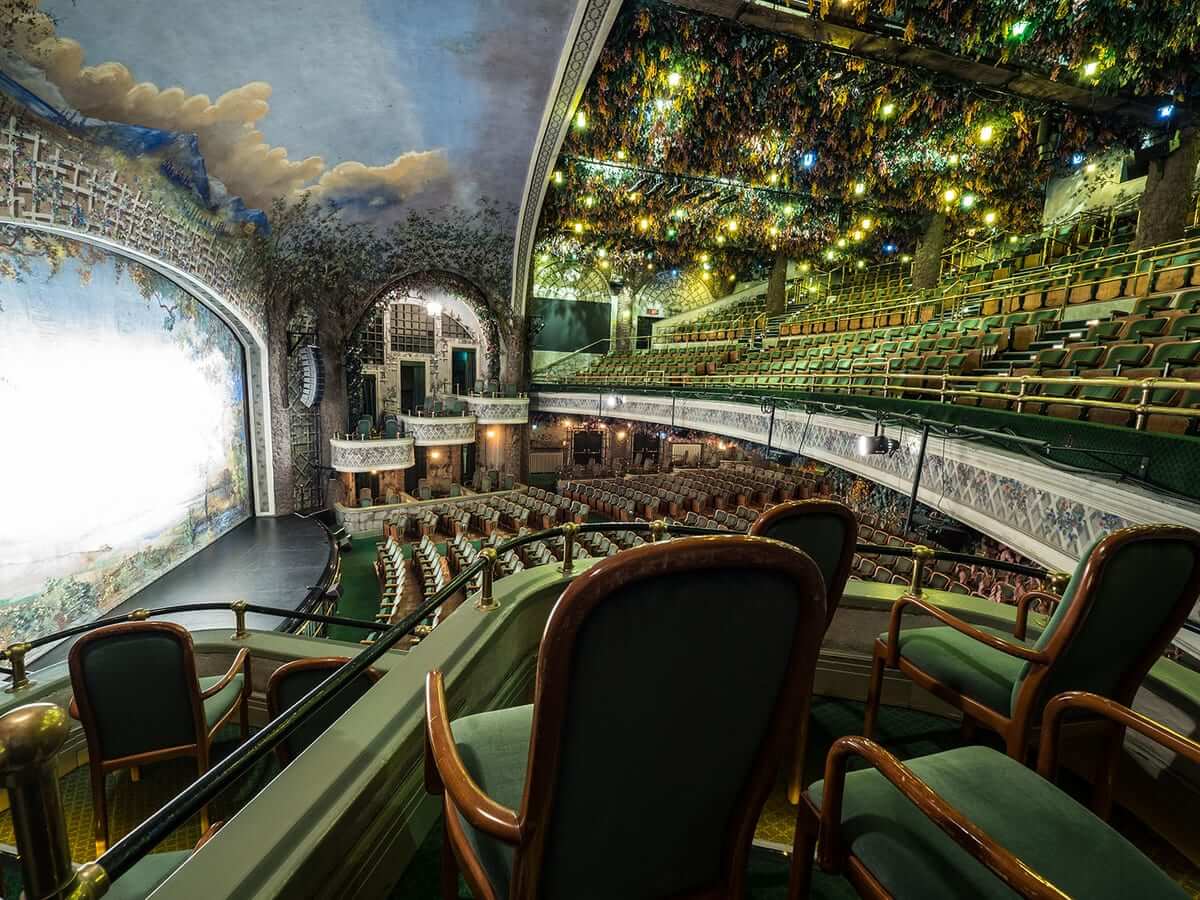Toronto’s Elgin and Winter Garden Theatre are the last surviving double-decker theatres of the Edwardian era still in operation in the world.

In 1913, Toronto had a population of about 210,000, and Mayor H.C. Hocken won that year’s municipal election with a total of 27,983 votes. It was also the year that the unique Elgin Winter Garden Theatre complex took up residence at 189 Yonge Street as part of the renowned Marcus Loew theatre chain. It was the Canadian flagship venue for the Loew chain, and the Elgin was once known as Loew’s Yonge Street Theatre.
The theatres were built to house vaudeville, silent films, and traveling theatrical performances, and in their heyday, they hosted luminaries like George Burns and Gracie Allen, Edgar Bergen and Charlie McCarthy, Milton Berle, and Sophie Tucker.
Today, it’s the only surviving double-decker theatre of the Edwardian era still in operation in the world, and a vibrant part of Toronto’s performing and arts scene. But, the path from past to present glory had a few bumps along the way.
The theatres were designed by Thomas Lamb, the architect also responsible for the Ed Mirvish Theatre, the Capital One Cinema in Ottawa, and the Sanderson Centre for the Performing Arts in Brantford. In the entire world, only 10 or 11 such double-decker theatres were ever built, and the Elgin Winter Garden is the only one to have been constructed in Canada.

The Elgin Theatre is a jewel box of ornate decoration, with a domed ceiling, gold leaf on the plaster work, and red brocade upholstery and curtain fabrics. In contrast, the Winter Garden, seven stories above the Elgin, was designed as a botanical escape from reality, its walls hand-painted with flowers, with real beech branches and leaves on the ceiling, and dotted with fairy lanterns. The columns became tree trunks, and the stage a sky painted blue, with a large moon.
The larger Elgin holds 1561, while the Winter Garden holds 992. During the vaudeville era, the Winter Garden held the premium seats and was reserved for the big name acts. The rooftop garden theatre was a staple of the late 19th century.
Designed in the Beaux Arts style, the building also features terracotta decorative work on the outside, along with patterned brickwork. As it was built, Loew discovered that the planned Yonge Street entrance violated 1912 Toronto bylaws. That’s why the Victoria Street entrance, now used as a stage door, was constructed.

As tastes in entertainment changed during the 20th century, so did the fortunes of the two theatres. The Winter Garden closed in 1928. In 1969, Loews finally sold the building to the Famous Players franchise, and The Wizard of Oz and Gone with the Wind saw their Canadian premieres at the Elgin.
But, as a movie theatre, the Elgin fell into a downward spiral of neglect and disrepair. During the 1970s, the Elgin was reduced to showing B movies and softcore adult flicks — the last movie it ever screened was What the Swedish Butler Saw. The opera boxes had been removed to accommodate a curved movie screen in the 1960s. As it turns out, the screen was never installed, and the empty area was simply covered with a curtain.
The building was purchased by the Ontario Heritage Trust in 1981 to avoid it falling into even greater disrepair. Even before the theatre was restored, it hosted the most successful pre-sales theatrical event in Canada at the time with a two-year run of Cats, proving it was still a viable venue.
An ambitious $29 million restoration began in 1984, no mean feat. The glittering gilt plaster work alone required more than 300,000 sheets of paper-thin aluminum leaf. Raw bread dough was used to clean the walls to avoid damaging the original hand-painted watercolour motifs. More than 5,000 new beech branches were woven together to recreate the ceiling.
As the restoration progressed, an additional 65,000 square feet of space became available, which today includes the lobby and lounge areas for the Elgin, and a backstage area that stretches eight stories high, with dressing rooms and rehearsal halls for artists. Along with the physical restoration, the theatres were outfitted with state of the art acoustic technology of the day.
Incredibly, when the Winter Garden was shuttered, it still contained a vast collection of scenery and props. Many flats and drops from vintage theatrical productions were preserved, and today form the largest collection of vaudeville era stage scenery and memorabilia in the world.
In 1987, renovations had reached the Elgin theatre space, and the building was closed entirely as the work continued. Both theatres reopened in 1989, the Winter Garden after a hiatus of 53 years.
The venue was instantly popular with audiences, who loved the grand and opulent décor. It went on to regain its prominence in the Toronto scene, particularly after 1994, when it hosted a world premiere of the musical Napoleon, a production that went on to London’s West End in 2000.
Other highlights include a four-episode stint of NBC’s Late Night with Conan O’Brien, taped in the Elgin in 2004. It was featured in movies like The Shape of Water (2017), and serves as the backdrop to Rush’s 1981 live album Exit…Stage Left.
According to legend and word of mouth, along with staff, techs, and visiting performers, the Elgin Winter Garden is home to a few other residents — ghosts.
Among the spirits said to haunt the grounds are that of a girl who was stabbed in the Winter Garden’s fifth floor restrooms. As the story goes, the unfortunate girl dragged herself to the elevator, but no one came, and she died on the spot. Staff say that the hand-operated elevator spontaneously travels up to the fifth floor, only to open to an empty hallway. Other ghost stories include a lonely trombone player, and a lady wearing lavender perfume,
One of the ghost stories was even imported from another theatre. Naturally, when Ontario Heritage Trust set out to rejuvenate the building, the seats and upholstery were largely ruined. Replacement seating came from the Biograph Theater in Chicago, which was having a sale of its old seats just at the right time. As the story goes, one of them was last theatre chair occupied by the notorious American gangster John Dillinger, who was shot dead by US special agents just outside the Biograph on July 22, 1934 after watching Clark Gable in Manhattan Melodrama.
Today, the theatre complex is a National Historic Site. Along with a calendar of concerts and events, including Ross Petty Productions, and screenings of the Toronto International Film Festival. Tours of the facilities — including ghost tours — have become one of the city’s most popular attractions. Take a virtual tour here.
#LUDWIGVAN
Want more updates on classical music and opera news and reviews? Follow us on Facebook, Instagram or Twitter for all the latest.
- THE SCOOP | TSO Cellist Joseph Johnson Appointed As Associate Professor At Eastman School Of Music - April 22, 2024
- IN MEMORIAM | Beloved Conductor Sir Andrew Davis Has Died At Age 80 - April 22, 2024
- THE SCOOP | The Glenn Gould Foundation Receives $12 Million Funding In Federal Budget - April 19, 2024



